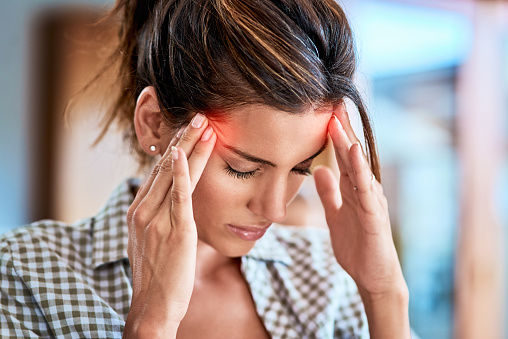Is Pain in Back of the Head Serious?
Headaches in the back of the head can have many causes; it may just be a minor injury or it could be a secondary sign of another problem in your body. The type and location of the pain can play an important role in diagnosing the cause of the headache. Headaches that are severe and recur frequently require medical attention from your doctor.
Headache in The Back of The Head Causes
If you have a headache from the back of your head to your neck to the back of your head, you may be experiencing a cervicogenic headache. A cervicogenic headache is a secondary headache, which means it is triggered by another physical problem. You may find that the headache gets worse with some neck movement, or when pressure is applied to certain points on the neck.
If you feel pain from the base of your skull that radiates upward, it could be due to a rare type of chronic headache known as occipital neuralgia. Occipital neuralgia can be caused rapidly, lasting from a few seconds to several minutes.
If you have pain at the back of your head, you may find some relief. To look for a long-term fix, you need to find the root cause. From bad posture to certain types of headaches, the back of your head may hurt from any of these triggers.
Poor posture
If you tend to bend over when sitting or standing, it can strain the muscles in the back of your head, upper back, neck and jaw. It can also put pressure on the nerves in those spots. As a result, poor posture can lead to tension headaches and pain at the back of your head.
Standing or sitting up straight can help relieve headaches from your poor posture. Over-the-counter pain relievers may also be helpful. In some cases, you may require physical therapy.
Migraine
Migraines tend to be less painful than tension headaches. While you may feel primarily on one side of your head, it can affect both sides of your head, the back of your head and your neck as well.
Sometimes you may get signs other than a headache, including a hot flush or feeling and pain.
What trigger migraines is not thoroughly understood. Some doctors believe it may be due to changes in brain cell activity that make your blood vessels to contract, create pressure in this area — resulting in a migraine.
It's not clear what makes these changes, but it's possible genetic (predisposition) -- or genes can make this activity more likely, especially when you're exposed to a potential trigger.
In women, migraines can strike around the time of menstruation, when hormone levels change. They can run in families too.
If you are prone to migraines, you need to find methods to treat them at home to help reduce pain and discomfort. You need to stay hydrated, and get plenty of rest. For some people, lying in a dark room and taking pain medication can help.
If you need to take painkillers, discuss with your doctor for help on how to get these drugs and use them.
Tension headache
Tension-type (TTH) headaches usually cause forehead pain, but they are also the most common cause of pain in the back of your head. They can last up to seven days, but they can also be brief, only lasting half an hour.
Signs of a tension type headache are:
- Mild to moderate pain occurs but can also be severe
- a feeling of tension in the back or front of the head
- not nausea and vomiting
- Headache does not get worse with exercise
Arthritis
Arthritis headaches are triggered by inflammation and swelling in your neck region. They usually cause headaches behind the head and neck. Movement usually causes more pain. Your headaches can be caused by any kind of arthritis. The most common ones are rheumatoid arthritis and osteoarthritis. (healthline.com)
How to Diagnose And Treat Your Headaches
There are multiple factors that cause headaches and location is only part of the puzzle. To get the right treatment for headaches, you need the right diagnosis. And it begins with making an appointment with the doctor.
It is always good to discuss with a doctor if your headaches start interfering with your daily life, if the headaches you experience suddenly differ or if they seem to progress in severity or frequency.
The doctor will diagnose the quality of the pain, how often the headaches occur, how long they last, their severity, the pattern of occurrence, and whether the pain gets worse with changes in body position. It is also useful to determine whether the headache pain is related to other symptoms, such as sensitivity to sound and light, dizziness, visual changes, weakness and numbness.
When to See The doctor
You should see a doctor if your headaches are severe or keep coming back. Also pay attention to other signs and symptoms, such as numbness of the limbs.
If your scalp is sore and tender, your jaw hurts, or you have blurred vision, you should seek medical help immediately.
You should also seek medical attention quickly if you experience headaches and:
- you have high temperature (fever)
- you lost your vision
- You find it hard to remember something
- you find it hard to speak
- the whites of the eyes turn red
Last Words
Headaches are common. They can impact a person's quality of life, and their ability to perform everyday tasks.
Some headaches go away without treatment, but some have a more serious reason. Anyone who is concerned about pain in the back of the head should seek medical advice. If there's an underlying cause that requires treatment, it's best to do it as soon as possible.

No comments:
Post a Comment